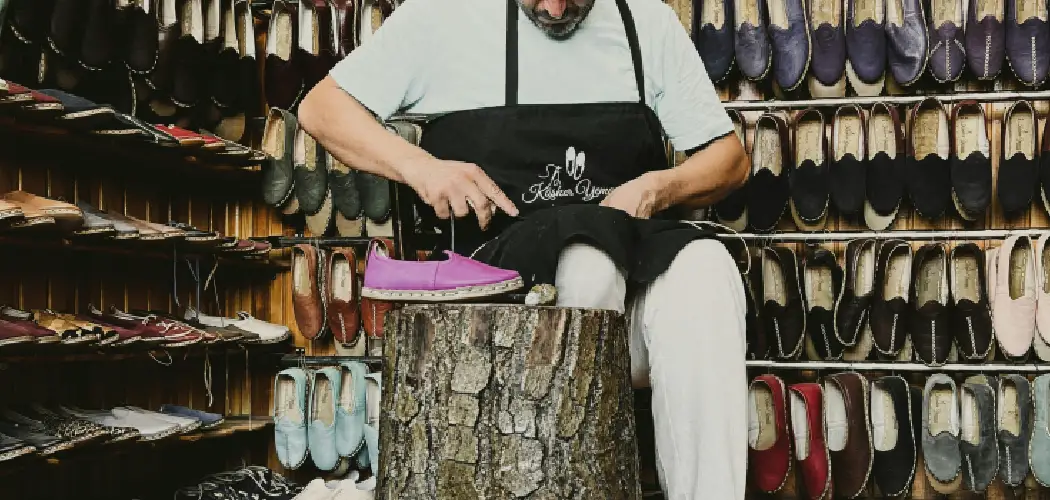Leather shoes are a timeless investment, offering both style and durability. However, to ensure they remain in prime condition and last for years, proper storage is essential.
This guide on how to properly store leather shoes will provide you with practical tips and best practices for storing your leather shoes, helping to preserve their appearance and extend their lifespan.
Whether you’re dealing with a formal pair of dress shoes or a casual pair of loafers, the right storage approach can make all the difference.
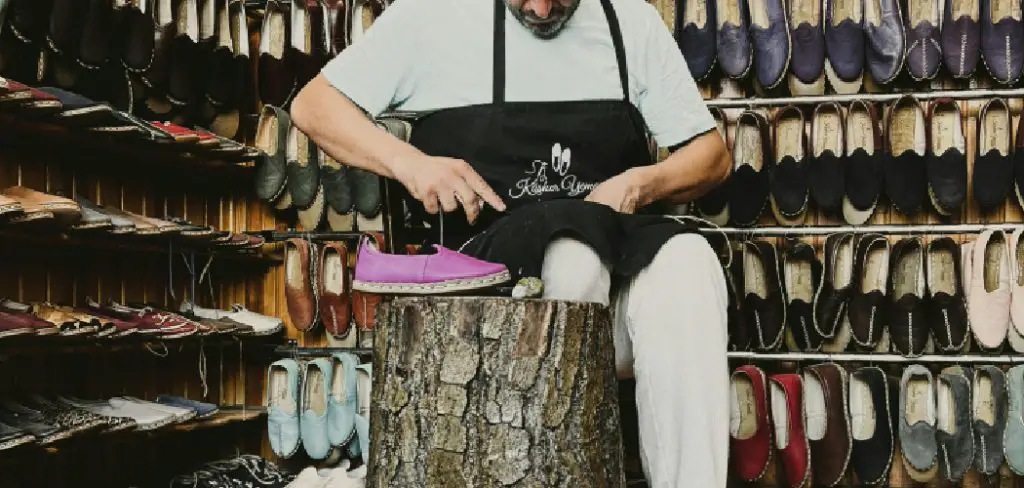
Why is Proper Storage Important?
Proper storage of leather shoes is crucial for several reasons. Firstly, it helps to maintain the shape and structure of the shoes, preventing them from becoming misshapen or developing creases that can be difficult to remove. Leather is a natural material that can be sensitive to environmental conditions; improper storage can lead to issues such as drying out, cracking, or molding, especially if the shoes are exposed to extreme temperatures or high humidity.
Additionally, proper storage can help protect your shoes from dust, dirt, and potential damage from insects or pets. By taking the time to store your leather shoes correctly, you’re not only preserving their aesthetic appeal but also ensuring that they remain comfortable and functional for years to come.
Needed Materials
To properly store your leather shoes, you will need:
- A Shoe Tree or Rolled-up Newspaper
- Shoe Bags or Dust Covers
- A Shoe Storage Box or a Shelf
- Acid-free Tissue Paper (Optional)
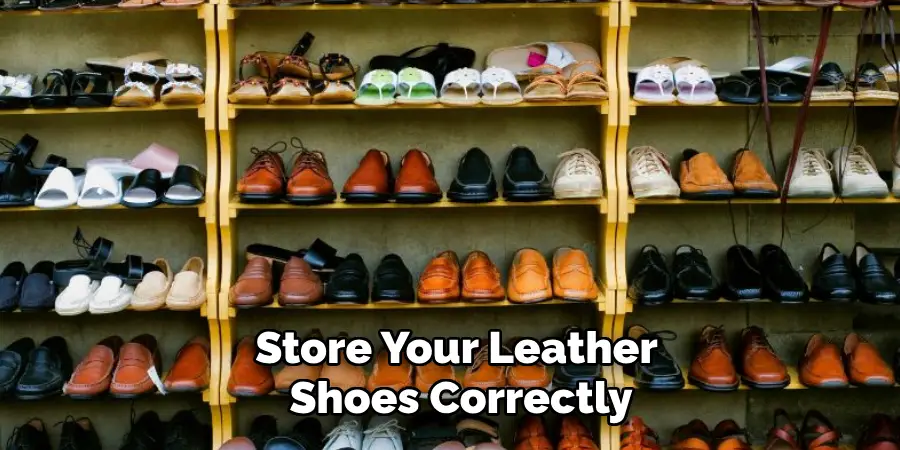
8 Step-by-step Guides on How to Properly Store Leather Shoes
Step 1: Clean and Dry
Before storing your leather shoes, it’s essential to ensure they are clean and completely dry. Start by gently brushing off any dirt or debris using a soft-bristled shoe brush. For more stubborn stains or scuffs, use a damp cloth with a small amount of mild soap or leather cleaner.
After cleaning, allow the shoes to air dry naturally in a well-ventilated area, away from direct sunlight or heat sources, which can cause the leather to dry out and crack. Ensuring your shoes are thoroughly clean and dry will help prevent any mold or mildew from developing during storage.
Step 2: Apply Conditioner or Polish
Once your leather shoes are clean and dry, the next step is to condition or polish them. Using a high-quality leather conditioner will help keep the leather moisturized and supple, preventing it from drying out and cracking over time. Apply a small amount of conditioner to a soft cloth and rub it gently into the leather using circular motions. Allow the conditioner to be fully absorbed before moving on to the next step.
If you prefer to add a polished finish to your shoes, now is the time to apply your chosen shoe polish. Select a polish that matches the color of your leather shoes and use a clean, soft cloth to apply a thin, even layer over the surface. Buff the shoes with a separate cloth to achieve a smooth, shiny finish. Regular conditioning and polishing not only enhance the appearance of your leather shoes but also provide a protective barrier against dirt and moisture.
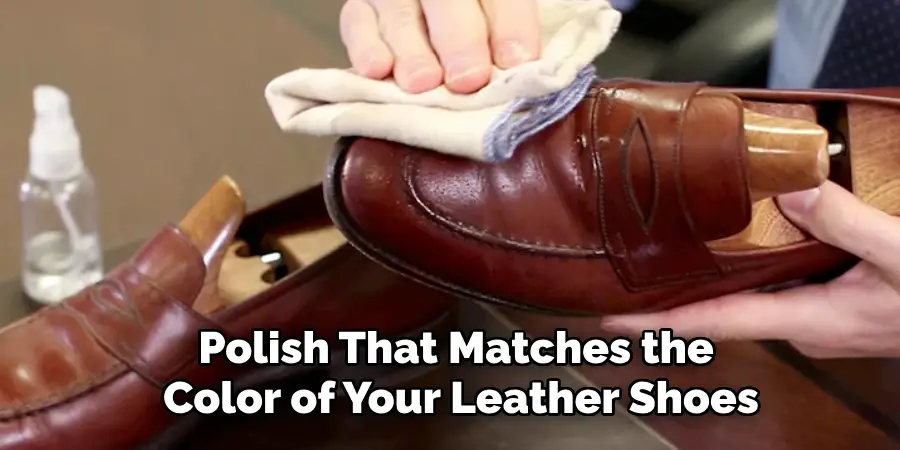
Step 3: Use a Shoe Tree or Newspaper
To maintain the shape and structure of your leather shoes during storage, it is highly recommended to use a shoe tree or, as an alternative, rolled-up newspaper. A shoe tree, preferably made of cedar wood, absorbs moisture, combats odors, and helps keep the leather smooth by applying gentle pressure against the shoe’s inner lining. Insert the shoe tree into each shoe, ensuring it fills the toe box and provides support to the heel area.
If you do not have a shoe tree, you can use rolled-up newspaper as a substitute. Crumple enough newspaper to fill each shoe and support its shape. However, it is important to note that while the newspaper can help maintain the shape, it does not offer the same moisture and odor-absorbing benefits as a cedar shoe tree. Whether you use a shoe tree or newspaper, this step is crucial to prevent the leather from collapsing and developing creases during storage.
Step 4: Insert Shoe Bags or Dust Covers
If you have shoe bags or dust covers that come with your shoes, use them to protect the leather’s surface from any potential damage. Shoe bags are especially useful if the shoes are stored in a shared space, such as a closet, where they may come into contact with other items. Similarly, use dust covers to prevent dust and debris from settling on your shoes while in storage.
If you do not have shoe bags or dust covers, you can also use acid-free tissue paper to wrap each shoe before placing them in storage. The tissue paper provides an extra layer of protection against moisture and helps maintain the shape of the shoes.
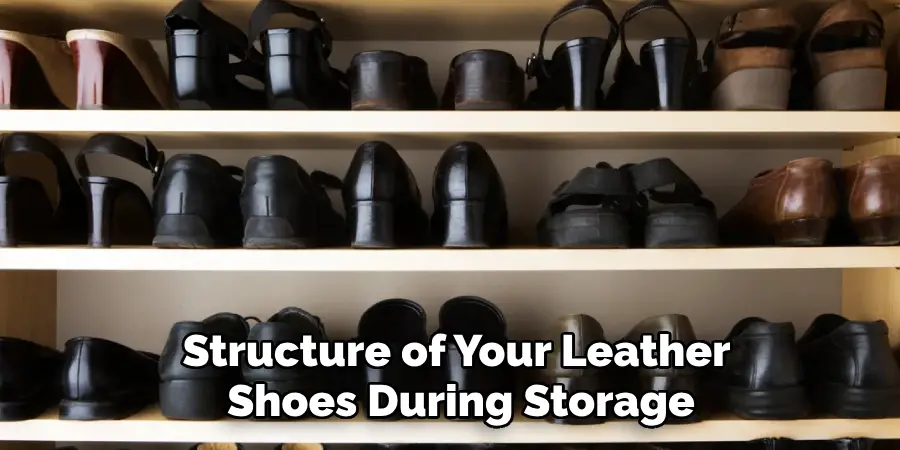
Step 5: Choose the Right Storage Option
When it comes to storing leather shoes, the location and container you choose are crucial. Ideally, you want to store your shoes in a cool, dry place with good air circulation. Avoid areas that are exposed to extreme temperatures or high humidity, as these conditions can cause damage to the leather.
If possible, store your leather shoes in their original shoe box; this will provide protection and help maintain their shape. If not, opt for a breathable container or shelf that allows for proper air circulation. Avoid using plastic bags or containers that can trap moisture and lead to mold growth.
Step 6: Store Away from Direct Sunlight
Direct sunlight can cause the leather to fade and dry out, leading to cracks and discoloration. When choosing a storage location for your leather shoes, ensure it is away from any windows or areas that receive direct sunlight throughout the day.
It is also important to avoid storing your shoes near heat sources, such as radiators or heating vents, as this can have a similar effect on the leather.
Step 7: Rotate Shoes Regularly
To prevent any potential damage from prolonged storage, it is recommended to rotate your shoes regularly. This means taking out the stored pairs and wearing them for a day or two before returning them to storage and taking out another pair. Rotating your shoes allows for proper air circulation and prevents any creases or indentations from forming in one spot.
You can also take this opportunity to inspect and clean your shoes before returning them to storage. This step will help ensure the longevity of your leather shoes and prevent any unforeseen damage from going unnoticed.
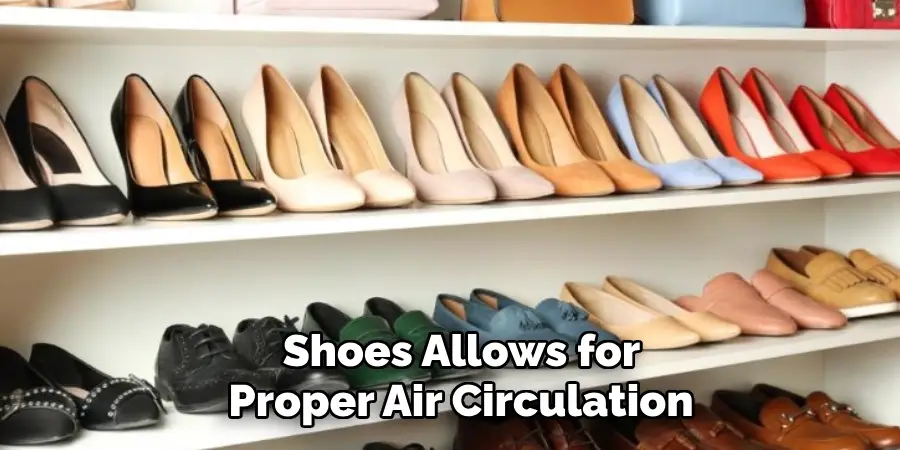
Step 8: Recondition Before Use
Before wearing your stored leather shoes again, it’s important to recondition them. Remove the shoe tree or newspaper and allow the shoes to air out for a day or two. Then, apply a small amount of conditioner or polish to restore their luster and suppleness.
Following these steps on how to properly store leather shoes will not only keep your leather shoes in top condition but also make storing them hassle-free. With proper care and storage, you can enjoy your favorite pair of leather shoes for years to come. So, keep these tips in mind and give your leather shoes the care they deserve!
Additional Storage Tips
Use Desiccant Packets
Including silica gel or other desiccant packets in the storage containers can help manage moisture levels and further protect your leather shoes from mold and mildew. These packets absorb excess humidity in the environment, keeping the interior of the storage area dry.
Label Each Box
If you have multiple pairs of leather shoes and use individual boxes for storage, it can be helpful to label each box. This way, you can easily find the pair you’re looking for without having to open several boxes. Labels can include not only the shoe type but also the date they were last conditioned.
Keep an Inventory
Maintaining an inventory of your shoe collection can be particularly useful if you own many pairs. Documenting the condition of each pair and any maintenance performed on them will help you keep track of their upkeep and ensure they all receive equal attention and care.
Regular Inspections
Even with all the precautions, it is a good idea to periodically inspect your stored leather shoes. Look for any signs of moisture, mold, or pests, and address any issues promptly to prevent long-term damage.
Avoid Overcrowding
When storing multiple pairs, avoid cramming them into a confined space. Overcrowding can lead to deformation or creasing of the leather. Make sure each pair has ample space and ventilation to maintain its shape and condition.
By incorporating these additional tips with the fundamental storage steps, you can ensure that your leather shoes remain in excellent condition and are ready to wear whenever needed.
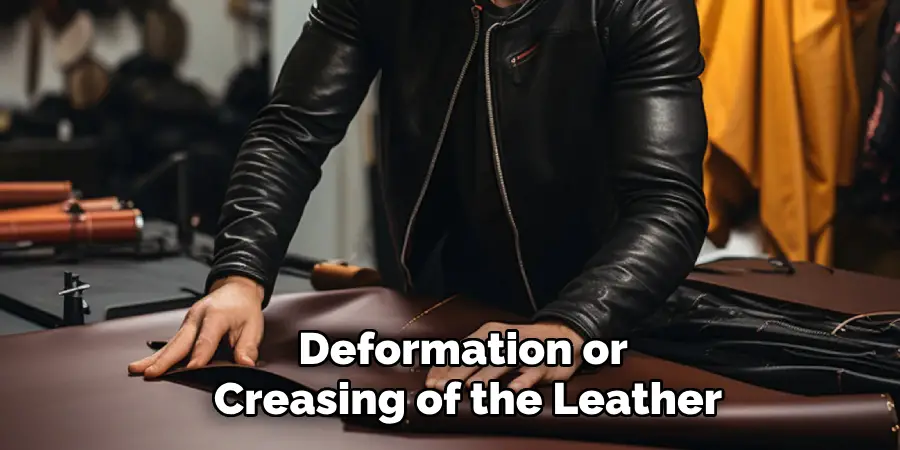
Conclusion
Proper storage of leather shoes is essential to maintaining their appearance, comfort, and longevity. By following the outlined steps on how to properly store leather shoes—cleaning and conditioning, using shoe trees or newspaper, inserting shoe bags or dust covers, choosing the right storage option, avoiding direct sunlight, rotating shoes regularly, and reconditioning before use—you can ensure your leather shoes remain in excellent condition.
Additional tips, such as using desiccant packets, labeling boxes, keeping an inventory, conducting regular inspections, and avoiding overcrowding, further enhance your shoe care routine. With diligent care and storage practices, your favorite pairs of leather shoes will remain a stylish and reliable choice for years to come.

